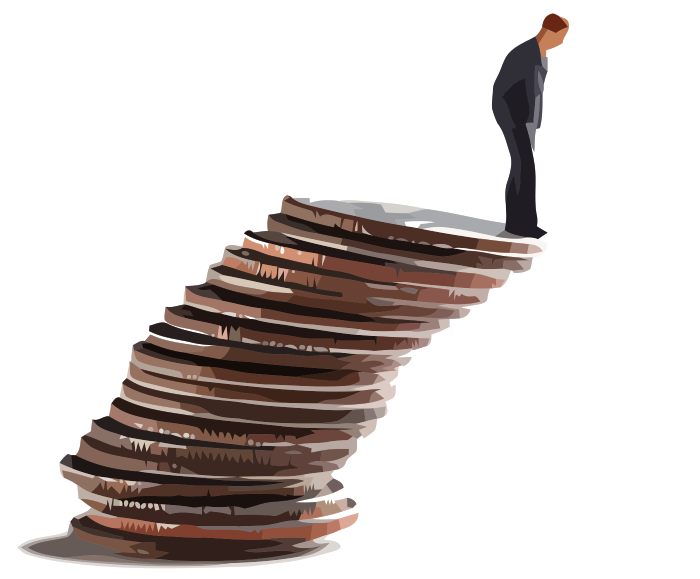by Short Side of Long
[Update] I have updated the post below as there were two typing mistakes in my original data, which skewed the graph slightly. Both the post content and the charts below have now been updated.
When analysing the current post, please be aware that the US economy by and large still remains the most dominant powerhouse of the world, so its stock market is a leader for all others to follow. While not all stock markets are discussed in this post, the reasoning behind using US equity data makes complete sense from a historical point of view, as it has been the main leader of the global stock market for decades.
Chart 1: This bull is very aged relative to its historical precedents…
The first chart above shows that the current bull market is now 252 weeks old (260 would make it 5 full years), with a start on 06th of March 2009. I find it very interesting how majority of retail investors and mum / pops 401k funds are actually piling into stocks right now, as opposed to back in early 2009 at the depths of the Global Financial Crisis (GFC).
According to history of almost 100 years, the current bull market is 4th on the rank of age and the longer it goes on for – the higher the risk of a major crash. Why do I say this? Well, please note that the 1982 bull market was followed by a major and infamous crash of 1987. Furthermore, the 1990 bull market was followed by a major tech bubble bursting in 2000, also crashing the market.
Finally, the bull market that started in 2002 eventually peaked in October 2007 and afterwards crashed during the greatest recession since 1929 as GFC swept around the globe. Another super long bull market, which started in 1921 and ended in 1929, also ended into a massive crash and started a Great Depression.
The important fact is that, today we are way past the historical average and it seems that the lessons of history are that the risk increases substantially as the trend ages. The longer the bull market goes on for, the higher the excesses become and the more painful the clean out will be on the other side.
Chart 2: … and has already experienced majority of the gains!
The second chart looks at the gains of the bull markets discussed above. When we analyse the gains, the current bull market has managed to achieve 175% return over the last 252 weeks (or 5 years). This has been a stellar rally, partially because we became so oversold after the GFC crash of 2008 and partly because for the first time in history, all major central banks are devaluing their currencies to push stock markets higher in an experiment of reviving the household net worth.
First conclusion we can make is that majority if not all of the gains are gone now, as the current returns have only been witnessed four times before over the last 100 years of data. First time was during the recovery after the 1929 crash, second time was during recovery post World War II of 1940s, the third time was during the great bull market of the early 1980s and finally the only other time was during the roaring 90s as everyone was dancing to the tune of endless prosperity (until the tech bubble burst in 2000).
Now, it is fair to say that maybe the gains could and will continue for awhile long, but I think it is pretty safe to say that this bull market is looking awfully tired and very aged. We are current propelled higher by an artificial recovery of “money printing activities” known as QE programs, as countries around the world including US, continue to debase their currencies. Artificial rallies do occur throughout history as fundamentals become disconnected, however eventually reality does kick in and ends very badly.
Finally, it is worth mention again that valuations are now so high, only a handful of months during 1929 and 2000 bubble peaks were higher. That tells us that even if the market isn’t in a bubble right now, nonetheless is is extremely overvalued and prone towards major downside risks. If we still believe in the mean reverting scenarios, then one could go one step further and make an assumption that CAPE 10 will spend a decent amount of time below its mean (between 12 to 14 PE), the same way it spent a decent amount of time above it throughout the 1990s and 2000s.
As a longer term investor, personally I wouldn’t dare touch the overvalued, overbought, overly bullish, aged equity bull market right now (with majority of the gains already realised). However, that doesn’t mean this overvaluation could not go even higher in the short term…
Chart 3: Stock market rally is approaching valuations of 1929 & 2000!!!



















